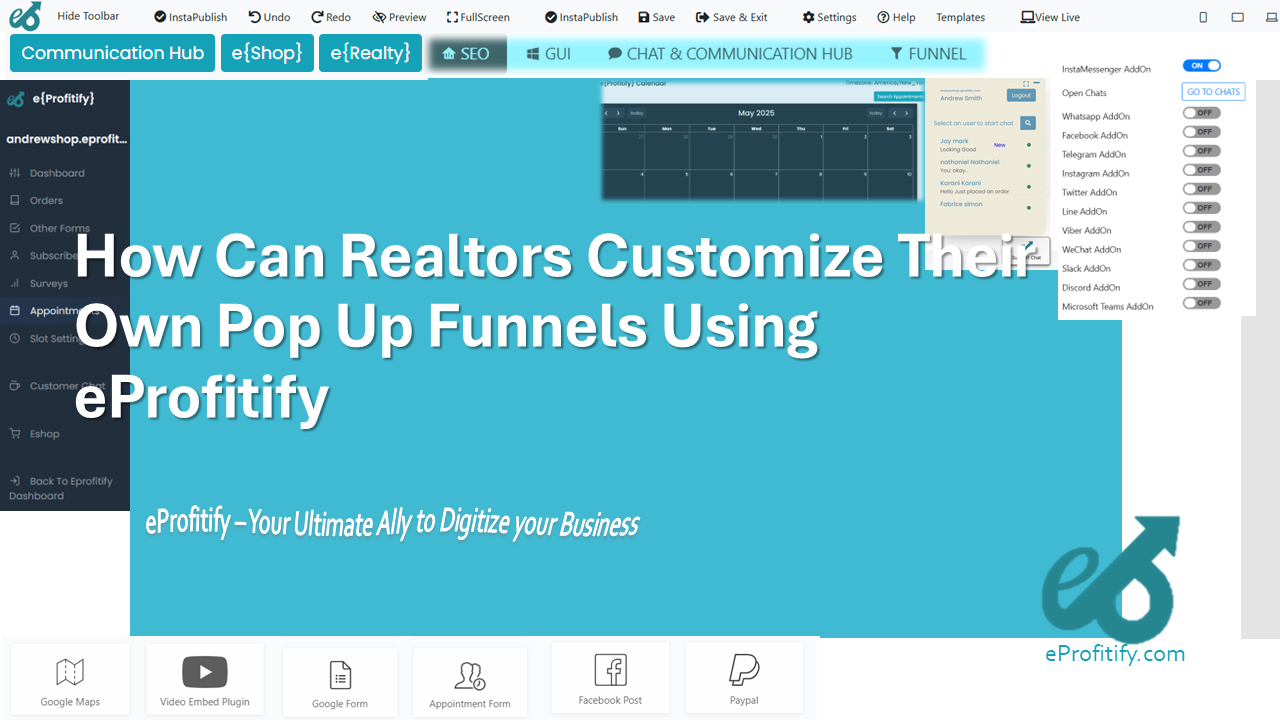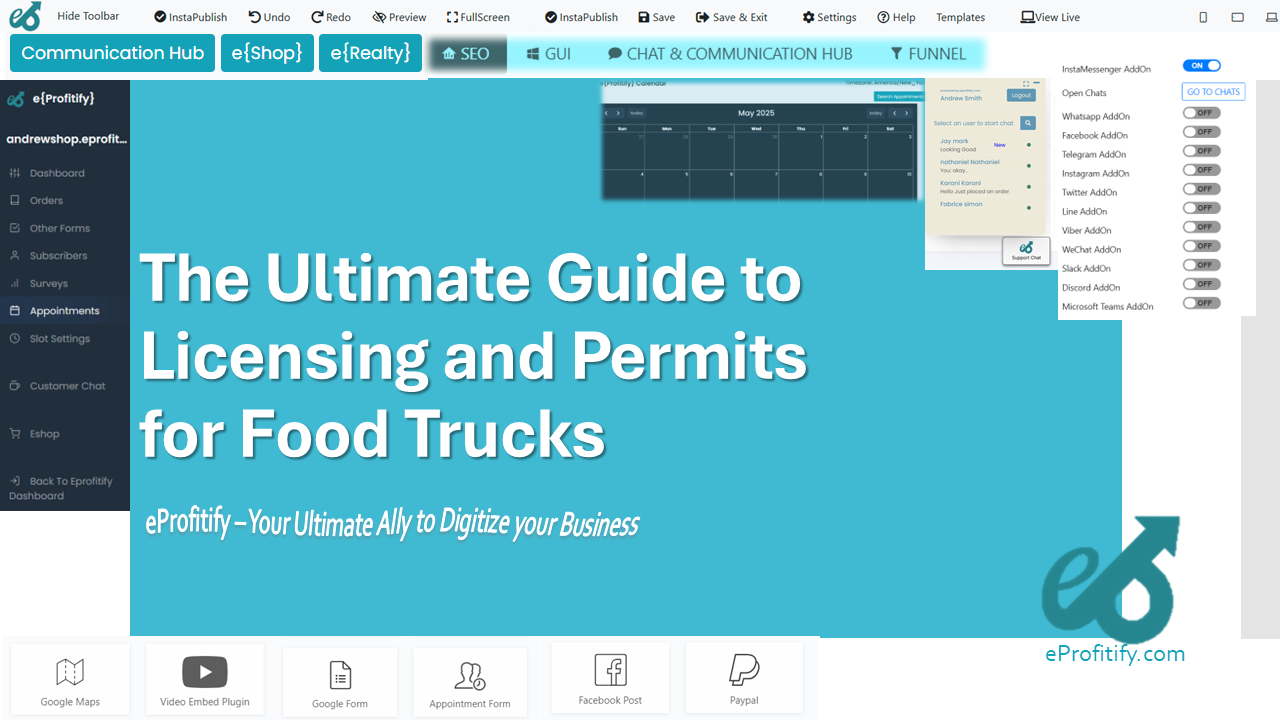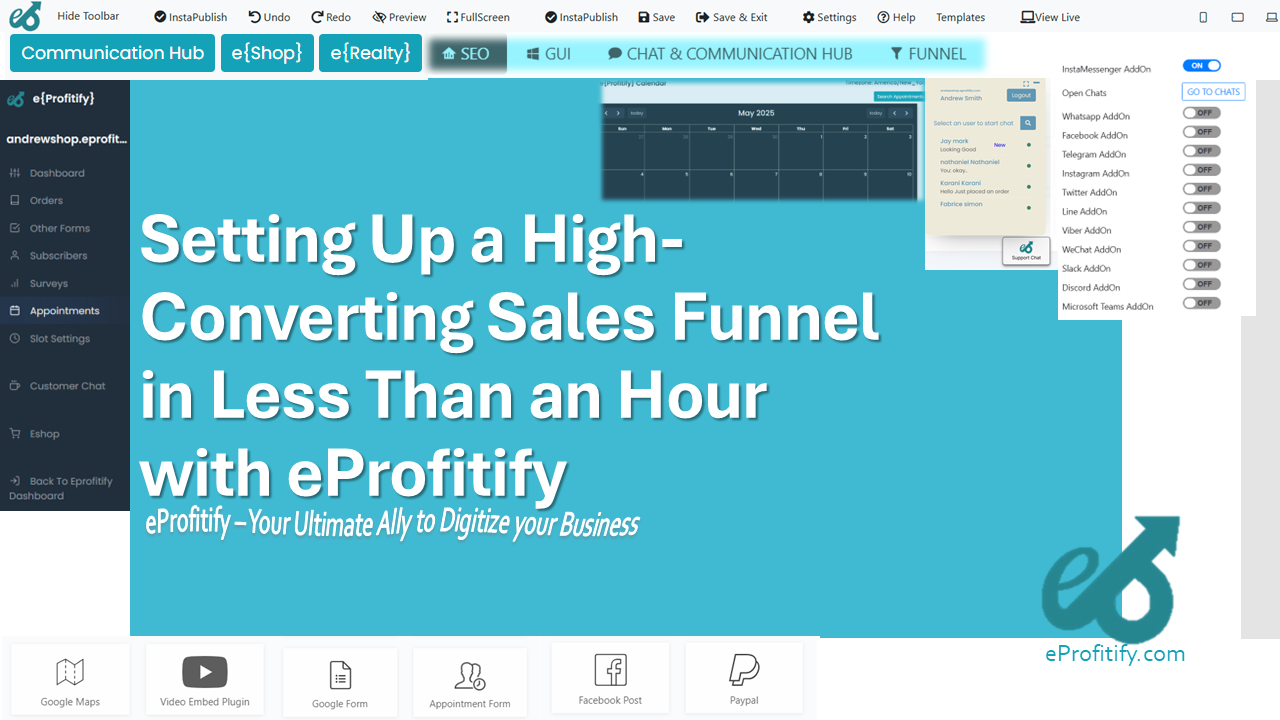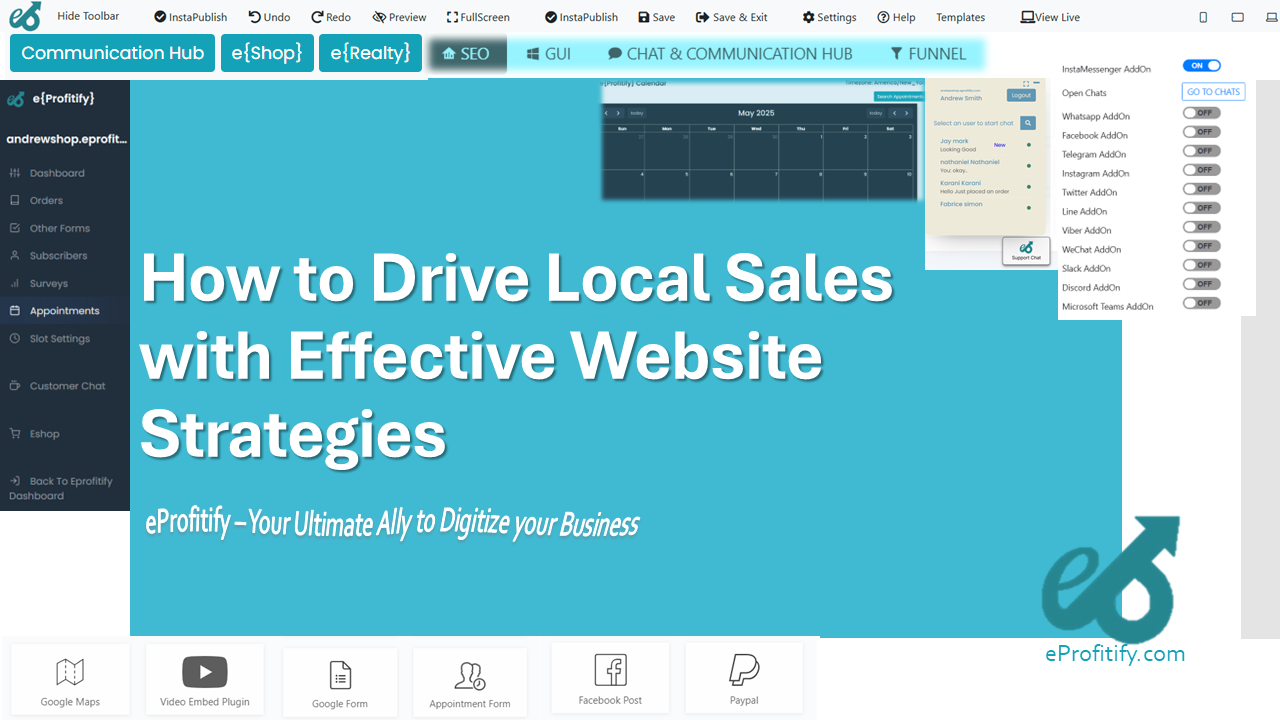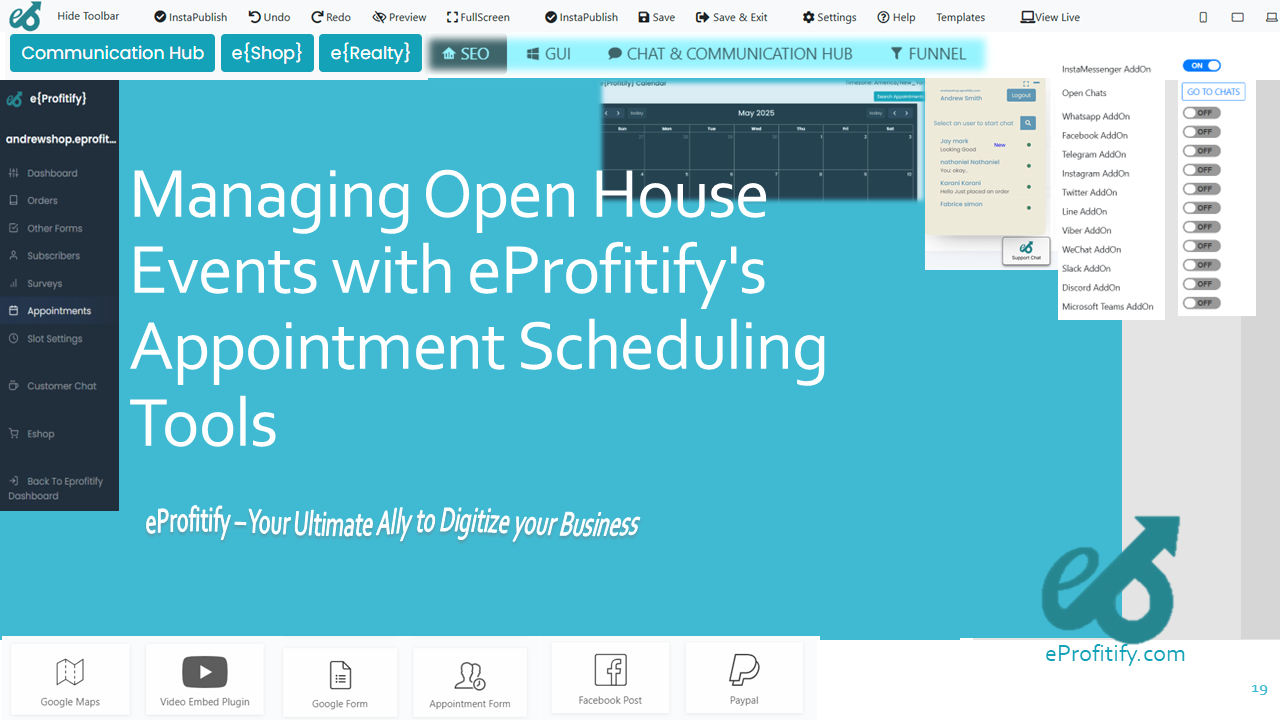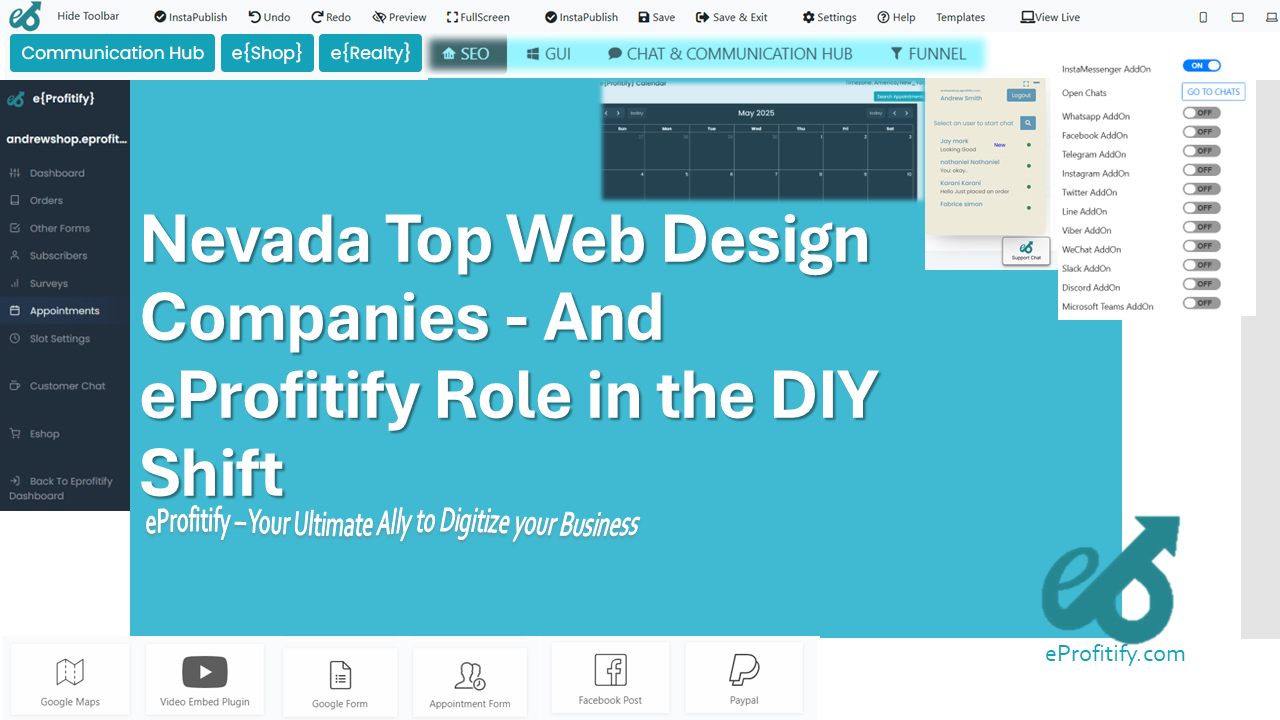Encouraging and Managing Reviews for Local SEO
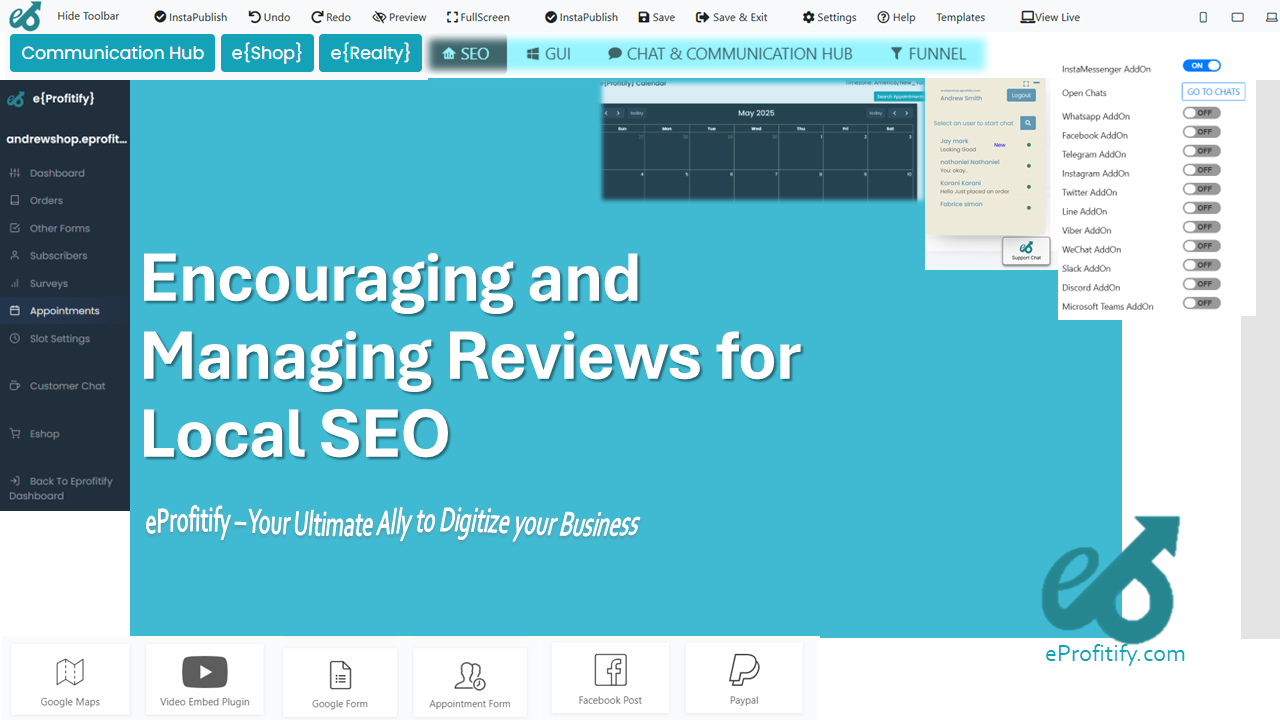
Schedule a LIVE Zoom call with an eProfitify Expert.
Encouraging and Managing Reviews for Local SEO: Strategies, Statistics, and Tools
Online reviews are a cornerstone of local SEO, influencing search rankings, building consumer trust, and driving business growth. For local businesses, maintaining a steady stream of authentic reviews and effectively managing feedback can directly impact visibility in the "Local Pack" and map results. This article explores actionable strategies to encourage reviews, techniques to manage them, and the role of tools like eProfitify in streamlining these processes.
The Importance of Reviews for Local SEO
-
Impact on Search Rankings: Google’s algorithm considers reviews as a key ranking factor for local search. Businesses with higher ratings and recent reviews often appear more prominently in local results. According to a 2023 BrightLocal study, 87% of consumers read online reviews for local businesses, and 73% only pay attention to reviews written in the past month. Fresh, positive reviews signal relevance and credibility to search engines.
-
Consumer Trust and Conversion: Reviews influence purchasing decisions. A Moz report found that businesses with a 4-star rating or higher attract 68% more clicks than those with lower ratings. Additionally, 49% of consumers trust online reviews as much as personal recommendations (BrightLocal, 2023).
-
Local Pack Dominance: Google’s Local Pack (the top three local results) prioritizes businesses with active review profiles. A 2022 Whitespark study revealed that 44% of local searches result in a click on the Local Pack, making reviews critical for capturing high-intent customers.
Strategies to Encourage Reviews
-
Ask Directly:
Politely request reviews in person, via email, or through post-purchase follow-ups. Training staff to mention reviews during checkout or service completion can yield results. For online transactions, automated review requests via SMS or email have a 32% higher response rate (Podium, 2023). -
Streamline the Process:
Simplify the review process by providing direct links to your Google Business Profile (GBP), Yelp, or industry-specific platforms. Tools like eProfitify enable businesses to send customized review links via instant messaging or email, reducing friction for customers. -
Leverage Multiple Platforms:
Diversify your review profile across platforms like Google, Facebook, and niche directories (e.g., TripAdvisor for hospitality). A Spiegel Research Center study found that products or services with reviews on multiple sites see a 380% boost in conversion likelihood. -
Incentivize Thoughtfully:
Offer small incentives (e.g., discounts) to encourage feedback, but avoid offering rewards explicitly for positive reviews, which violates guidelines on most platforms. Instead, frame incentives as appreciation for honest opinions. -
Showcase Existing Reviews:
Display positive reviews on your website or social media. User-generated content (UGC) builds social proof and subtly prompts satisfied customers to contribute.
Managing Reviews Effectively
-
Respond Promptly:
Engaging with reviews—both positive and negative—shows customers you value their input. Google prioritizes businesses that actively manage their GBP profiles. According to ReviewTrackers, 53% of customers expect businesses to respond to negative reviews within 7 days. -
Address Negative Feedback Professionally:
Negative reviews are inevitable, but how you handle them matters. Apologize sincerely, offer solutions, and take conversations offline if needed. Adobe reports that empathetic responses can turn 33% of dissatisfied customers into loyal patrons. -
Monitor and Analyze:
Use tools to track reviews across platforms. eProfitify’s CRM system centralizes feedback data, enabling businesses to identify trends (e.g., recurring complaints about wait times) and address operational gaps. -
Utilize User-Generated Content:
Repurpose positive reviews into testimonials for marketing materials. This not only amplifies social proof but also encourages others to leave feedback.
The Role of Technology: eProfitify in Review Management
Managing reviews at scale requires robust tools to automate workflows, analyze data, and maintain customer relationships. eProfitify, a leading website publishing and management platform, offers features tailored to enhance local SEO and review management:
- Instant Messaging: Engage customers in real time to resolve issues or request feedback, increasing the likelihood of positive reviews.
- Appointment Management System: Automate post-appointment review requests via SMS or email, ensuring timely feedback collection.
- Ecommerce Integration: Post-purchase review invitations are seamlessly triggered, aligning with peak customer satisfaction moments.
- CRM Tools: Track customer interactions, segment audiences, and personalize follow-ups to boost review participation.
- Analytics Dashboard: Monitor review metrics, sentiment trends, and local SEO performance in one interface.
By consolidating these functions, eProfitify reduces manual effort and ensures businesses maintain a proactive approach to review generation and reputation management.
Statistics Reinforcing Review Management
- Businesses responding to 25–49% of reviews earn 35% more revenue than those ignoring feedback (Harvard Business Review).
- Listings with complete GBP information (including reviews) are 2.7x more likely to rank higher (Local SEO Guide, 2023).
- 89% of consumers check a business’s response to reviews before making a decision (BrightLocal).
Conclusion
Encouraging and managing reviews is non-negotiable for local SEO success. By fostering a review-friendly culture, leveraging multi-channel strategies, and utilizing tools like eProfitify, businesses can amplify their online presence, build trust, and stay ahead of competitors. As consumer reliance on reviews grows, integrating smart technology to streamline these processes becomes imperative for sustainable growth in the digital age.



